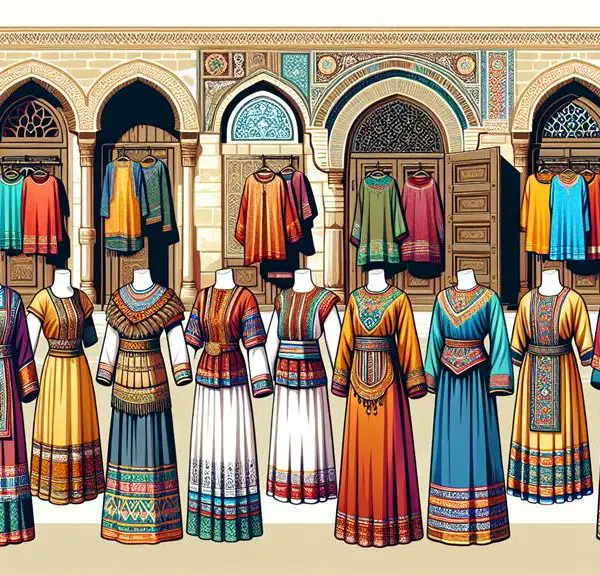Biblical mourning goes beyond grief, revealing deep layers of repentance and comfort that beckon a closer look into its sacred significance.

Mourn in the Bible Meaning
In the tapestry of biblical narratives, mourning weaves through as a thread of profound significance, coloring the fabric of divine-human interaction with hues of sorrow, repentance, and ultimately, comfort.
You'll find that in the Bible, mourning isn't just an expression of grief; it's a multifaceted concept that encompasses personal loss, national lament, and spiritual repentance.
The historical and cultural layers surrounding mourning in the biblical context add depth to its meaning, inviting you to explore how this ancient practice of expressing sorrow is reflected in contemporary experiences of grief.
Unraveling these threads offers insights into the nature of mourning and the promise of consolation that lies beyond.
Key Takeaways
- Mourning in the Bible encompasses both personal sorrow and communal expressions of grief.
- Biblical texts offer solace and promises of comfort to those mourning, emphasizing divine support.
- Mourning rituals in scripture, such as wearing sackcloth, symbolize repentance and a desire for spiritual healing.
- The process of mourning involves turning towards God for consolation, illustrated through prayers and Psalms.
The Essence of Mourning

Throughout history, mourning has served as a profound expression of loss and grief, fundamentally reflecting human responses to bereavement and sorrow. This process isn't just a period of sadness; it's a journey that can significantly impact your emotional resilience. As you navigate through the stages of grief, you embark on a transformative path that challenges and eventually strengthens your ability to cope with life's adversities.
The grief stages, a concept you're likely familiar with, suggest a sequence of emotional experiences that vary from denial to acceptance. However, it's crucial to understand that these stages aren't linear; they're more fluid and can recur in no specific order. This non-linear progression highlights the complexity of human emotions and the individual nature of mourning. Your emotional resilience is put to the test as you move through these stages, learning to adapt and find meaning in the loss.
Analyzing mourning through this lens offers a deeper insight into the essence of human resilience and the mourning process. It underscores the importance of acknowledging and expressing grief, facilitating a healing process that ultimately fosters emotional growth and resilience.
Historical Context of Grief
Humanity's approach to grief has evolved significantly across various cultures and historical periods, reflecting deep-seated beliefs and societal norms about life, death, and the afterlife. You'll notice that cultural variations and grief stages play a pivotal role in shaping how societies mourn.
Cultural Variations |
Grief Stages |
|
|---|---|---|
Ancient Egypt |
Denial and Isolation |
|
In ancient Egypt, mourning was deeply intertwined with religious practices. They believed in an afterlife, which influenced their elaborate burial rituals and mourning ceremonies, showcasing a blend of denial of death's finality and isolation in mourning rituals. |
Modern Western Societies |
Acceptance |
Indigenous Cultures |
Bargaining |
|
Indigenous cultures often see death as a transition rather than an end, incorporating rituals that emphasize connection with the deceased and nature. This perspective can lead to a bargaining stage, where mourners seek to negotiate the loss emotionally and spiritually. |
Contemporary Asian Societies |
Depression |
Understanding these differences and stages helps you appreciate the complexity of grief. It's not just about the emotions you're feeling; it's a reflection of centuries of human thought, belief, and tradition surrounding the inevitable journey from life to death.
Mourning and Repentance

In analyzing the interconnection between mourning and repentance, it's essential to recognize that various religious and cultural traditions often intertwine these concepts, shaping the way individuals and communities experience and express grief. This relationship indicates a profound pathway where mourning transcends mere loss acknowledgment, venturing into the realm of personal and collective moral introspection. Through this lens, grief stages and emotional healing aren't only about reconciling with loss but also about confronting and amending personal faults or societal wrongs.
To understand this complex dynamic, consider the following:
- Recognition of Wrongdoing: The initial grief stages often prompt individuals to reflect on their lives, identifying moments of regret or actions that may have contributed to their current state of loss.
- Expression of Sorrow: This involves openly expressing sorrow not just for the loss experienced but also for the actions or inactions that led to this point. It's a crucial step in the process of emotional healing.
- Commitment to Change: True repentance is evidenced by a tangible shift in behavior or attitude, showcasing a genuine desire to amend past mistakes.
These steps underscore a journey through mourning that culminates in emotional healing, illustrating how intertwined grief and repentance can foster profound personal growth and reconciliation.
Comfort in Times of Sorrow
In examining the concept of comfort in times of sorrow within biblical texts, you'll find that scripture offers specific promises of solace.
Mourning practices detailed in scripture not only reflect cultural norms but also underscore a communal approach to grief.
Furthermore, the notion of God's omnipresent support during periods of mourning emerges as a central theme, providing a foundation for understanding divine empathy and consolation.
Biblical Promises of Comfort
Throughout the Bible, you'll find numerous promises of comfort aimed at providing solace during times of sorrow. These promises are often depicted through:
- Healing tears: Scripture acknowledges the profound effect of crying as a natural response to grief, presenting it not as a sign of weakness, but as a step towards healing.
- Consolation prayers: Prayers are portrayed as a powerful medium for seeking comfort, showing that direct communication with the divine can bring solace in the darkest times.
- Divine presence: The assurance of God's constant presence with the grieving, offering peace and comfort, reinforces the belief in a compassionate deity attentive to human suffering.
These elements collectively underscore the Bible's role in providing spiritual succor, emphasizing the importance of faith in navigating the complexities of mourning.
Mourning Practices in Scripture
Building on the foundation of biblical promises of comfort, let's explore how scripture details specific mourning practices aimed at offering solace during times of sorrow.
Scripture acknowledges the diversity of mourning expressions, underscoring the importance of cultural variations and personal experiences in shaping these practices. It presents a spectrum from communal lamentations to personal acts of remembrance, illustrating a nuanced understanding of grief's multifaceted nature.
These practices, richly embedded in historical contexts, offer a window into how ancient communities navigated the complexities of loss. Analyzing these scriptural accounts, one appreciates the depth of empathy and communal support encoded within these rituals.
Thus, scripture not only acknowledges sorrow but also provides a structured means to express and process grief, accommodating a wide range of emotional experiences.
God's Presence in Grief
Scripture vividly portrays God's comforting presence as an unwavering beacon of hope amid the depths of grief. This divine solace isn't merely a fleeting sentiment but a profound source of emotional resilience and spiritual growth. Through the lens of biblical narratives, one can discern three pivotal ways in which this comfort manifests:
- Personal Encounters: Individuals report feeling a palpable sense of God's nearness during their darkest moments, fostering a deep emotional resilience.
- Communal Support: The community of faith often acts as the hands and feet of God, providing tangible support and comfort.
- Scriptural Promises: The Bible is replete with assurances of God's presence, offering an unshakeable foundation for spiritual growth amid sorrow.
These elements collectively underscore the multifaceted nature of divine comfort in times of grief.
Rituals and Expressions
In biblical times, mourning practices and expressions varied significantly, reflecting a deep cultural and religious understanding of grief. You'd find that cultural influences played a pivotal role in shaping the grieving process. Communities often adopted specific rituals that were both a reflection of their collective identity and an expression of their spiritual beliefs. These practices weren't merely about expressing sorrow but also about facilitating a process of healing and reintegration for the bereaved.
The grieving process itself was communal, with families and entire communities participating. This collective approach to mourning served not only to comfort the bereaved but also to reinforce social bonds and shared beliefs. You'd observe acts such as wearing sackcloth, applying ashes, fasting, and lamentation. These weren't arbitrary but deeply symbolic, each carrying specific meanings and intentions within the context of grief.
Moreover, the duration and intensity of mourning rituals could vary, influenced by factors such as the deceased's social status and the nature of their death. This variability underscores the adaptability and depth of cultural practices in addressing the multifaceted nature of grief. Through these rituals, communities navigated the complex emotional terrain of loss, guided by a rich tapestry of cultural and religious traditions.
Mourning in the Psalms

In the Psalms, you encounter a profound expression of sorrow that encapsulates the human experience of mourning. These biblical texts offer not only a space for lamentation but also extend comfort to the bereaved, demonstrating a dual function.
Through an analysis of specific Psalms, you can observe how these ancient songs facilitate a process of healing and solace.
Psalms: Expressing Sorrow
Many Psalms poignantly express the depth of sorrow and mourning experienced by their authors, offering a profound insight into the human condition during times of despair. These texts serve not only as expressions of grief but also as pathways to spiritual healing, bridging the gap between human suffering and divine comfort.
In understanding mourning within the Psalms, consider:
- The juxtaposition between sorrowful and Joyful Psalms, highlighting the range of human emotions.
- The role of laments in facilitating a dialogue with God, allowing for an outpouring of grief.
- The transformative power of these Psalms in guiding individuals from a place of mourning to one of spiritual healing and renewal.
This analysis reveals the Psalms' intricate role in navigating sorrow, emphasizing their timeless relevance in providing solace.
Comfort Through Psalms
Exploring the Psalms further, it's evident how these texts not only articulate the depths of mourning but also offer profound comfort to those navigating grief. Often referred to as grief poetry, the Psalms present a unique blend of sorrowful melodies and hopeful messages. This duality serves as a therapeutic tool, allowing you to process your emotions while simultaneously finding solace.
The Psalms validate your feelings of loss, acknowledging the pain and the tumultuous journey of grief. Yet, within these verses, there's a steady undercurrent of hope and reassurance. They remind you that mourning isn't an isolated experience but a universal one, offering a communal comfort. Through the Psalms, you're invited to lament freely while being gently guided towards healing and peace.
Jesus and the Mourning
Reflecting on the Gospels, we find that Jesus consistently demonstrated a profound empathy towards those who mourned, underscoring the importance of compassion in the face of sorrow. His interactions reveal a deep understanding of the human grieving process, showcasing Jesus' empathy in tangible, impactful ways.
To paint a picture for you:
- The story of Lazarus – Here, Jesus weeps alongside Mary and Martha, acknowledging their pain and loss before Lazarus is resurrected. This moment emphasizes the legitimacy of grief and the importance of community in the grieving process.
- The Sermon on the Mount – Jesus pronounces, 'Blessed are those who mourn, for they'll be comforted.' This beatitude reassures us that mourning is recognized and valued in the kingdom of heaven, and it emphasizes the promise of divine consolation.
- The compassion for the widow of Nain – Without being asked, Jesus approaches the funeral procession of the widow's only son, moved by her plight, and raises her son from the dead. This act of kindness illustrates the depth of Jesus' empathy and his response to human suffering.
Analyzing these narratives, it's clear that Jesus' approach to mourning wasn't only about offering comfort but also about validating the grieving process and the emotions that come with it.
Hope Beyond Grief

In the midst of sorrow, the Bible offers profound insights on finding hope beyond grief. It serves as a guide for resilience building and emotional healing, providing a framework for navigating the complex journey of mourning. The scriptures emphasize the transient nature of pain and the promise of comfort and restoration.
Biblical Aspect |
Impact on Grief |
Path to Healing |
|---|---|---|
Comforting Promises |
Alleviates despair |
Fosters hope and trust |
Community Support |
Reduces isolation |
Encourages sharing and understanding |
Future Hope |
Shifts focus from pain |
Builds resilience and perspective |
The Bible's portrayal of mourning is not one-dimensional; it acknowledges the depth of human sorrow while simultaneously pointing towards a future filled with hope. This duality is crucial for emotional healing, as it validates the mourner's feelings without leaving them entrenched in despair. The scriptural narrative encourages individuals to lean into their faith and community, highlighting that healing often occurs in the context of relationships and shared experiences. Ultimately, the Bible's teachings on mourning underscore the possibility of emerging from grief with a strengthened spirit and renewed hope.
Frequently Asked Questions
How Does the Concept of Mourning in the Bible Differ From Contemporary Views on Grieving?
In exploring how mourning in the Bible differs from modern grieving, you'll find that personal grief is both universal and timeless. However, cultural variations significantly influence the mourning process. Biblically, mourning often involves communal rituals and periods of lamentation, reflecting a collective experience.
Today, while grief remains deeply personal, societal norms around it have evolved, focusing more on individual healing processes and less on public expressions of mourning.
Are There Examples of Mourning in the Bible That Challenge Traditional Gender Roles or Societal Expectations?
Yes, you'll find examples in the Bible that challenge traditional gender roles and societal norms around mourning. Consider how David openly lamented the deaths of Saul and Jonathan, defying the stoic male archetype.
Similarly, the wailing women, who professionally mourned, highlight how public expressions of grief intersected with gender dynamics. These instances push against rigid expectations, offering a nuanced view of how grief and mourning were culturally and gender-specifically expressed.
How Has the Biblical Understanding of Mourning Influenced Modern-Day Funeral Practices in Various Cultures?
Your exploration of how mourning has shaped modern-day funeral practices unveils a tapestry of cultural ceremonies and grief expression. It's like unearthing ancient roots that have fed into the trunk of contemporary rituals.
These practices, deeply infused with biblical understandings, vary widely across cultures. They offer a lens through which you can analyze the evolution of mourning, seeing how ancient scriptural interpretations continue to influence the way grief is both expressed and experienced today.
Can the Act of Mourning in the Bible Be Seen as a Form of Protest or Resistance Against Injustice?
Absolutely, the act of mourning in the Bible can be seen as a form of protest or resistance against injustice.
It's not just about expressing sorrow; it involves mourning rituals and prophetic lamentation that serve as powerful critiques of societal wrongs.
These practices provide a framework for understanding grief not only as a personal response but also as a communal call to action, challenging unjust systems and seeking transformative change.
Does the Bible Provide Any Guidance on How Long the Mourning Period Should Last, or How to Transition Out of Mourning?
You're exploring whether the Bible offers guidance on the duration of mourning or transitioning out of it. While it doesn't specify a set period, it acknowledges mourning rituals as part of emotional healing.
The focus is on individual and community support rather than a timeline. Understanding this, you'll see the Bible provides principles for comfort and recovery, suggesting mourning is a deeply personal process without a one-size-fits-all duration or method.
Conclusion
In sum, the Bible presents mourning as an ocean of sorrow, so deep it seemingly knows no bottom, yet paradoxically, it's where the soul finds its most profound rebirth.
This ancient text doesn't just acknowledge grief; it cradles it, offering a tapestry of rituals, stories, and promises that transform mourning from a solitary walk through the valley of shadows into a communal ascent towards healing.
Through its verses, mourning becomes not just an expression of loss but a beacon of eternal hope.



Sign up